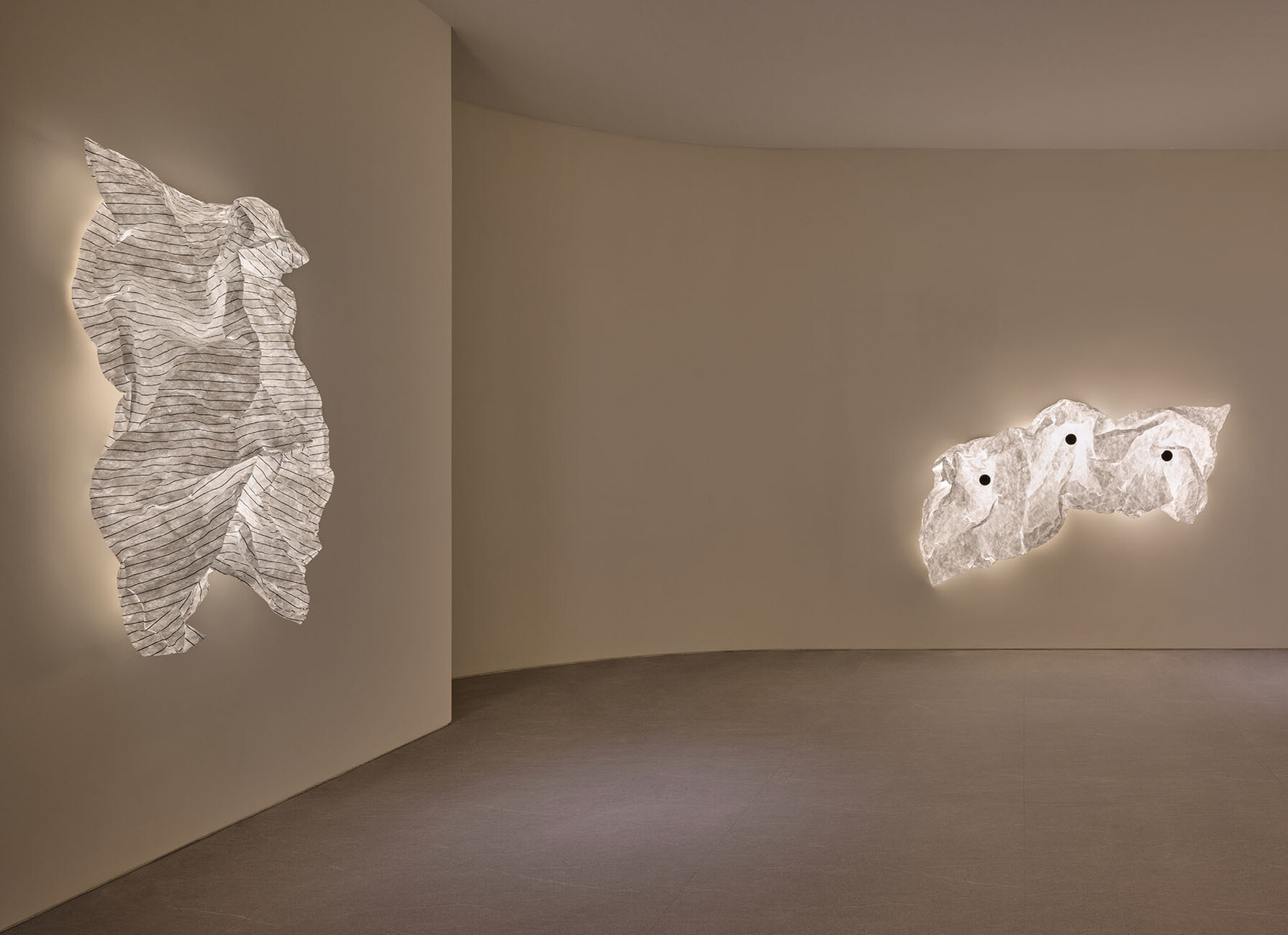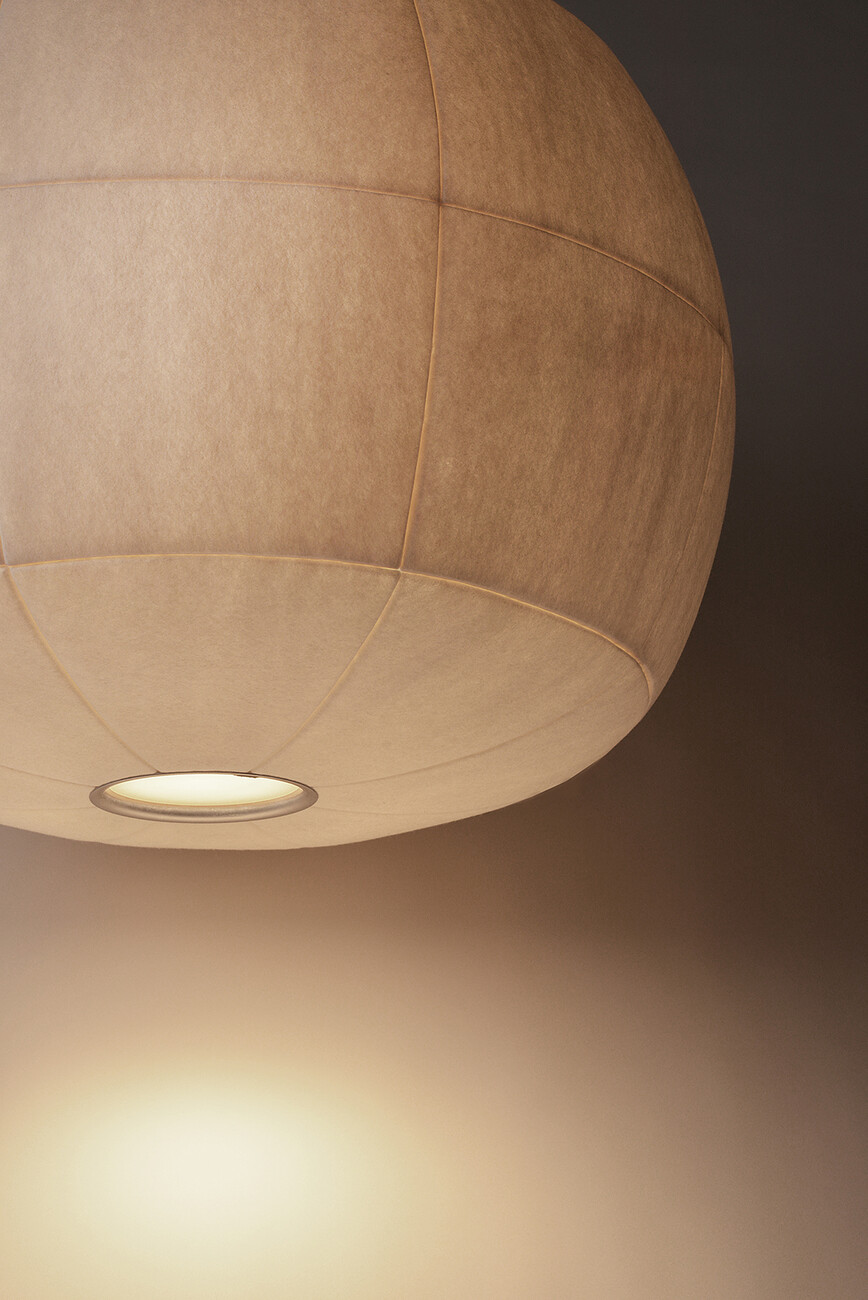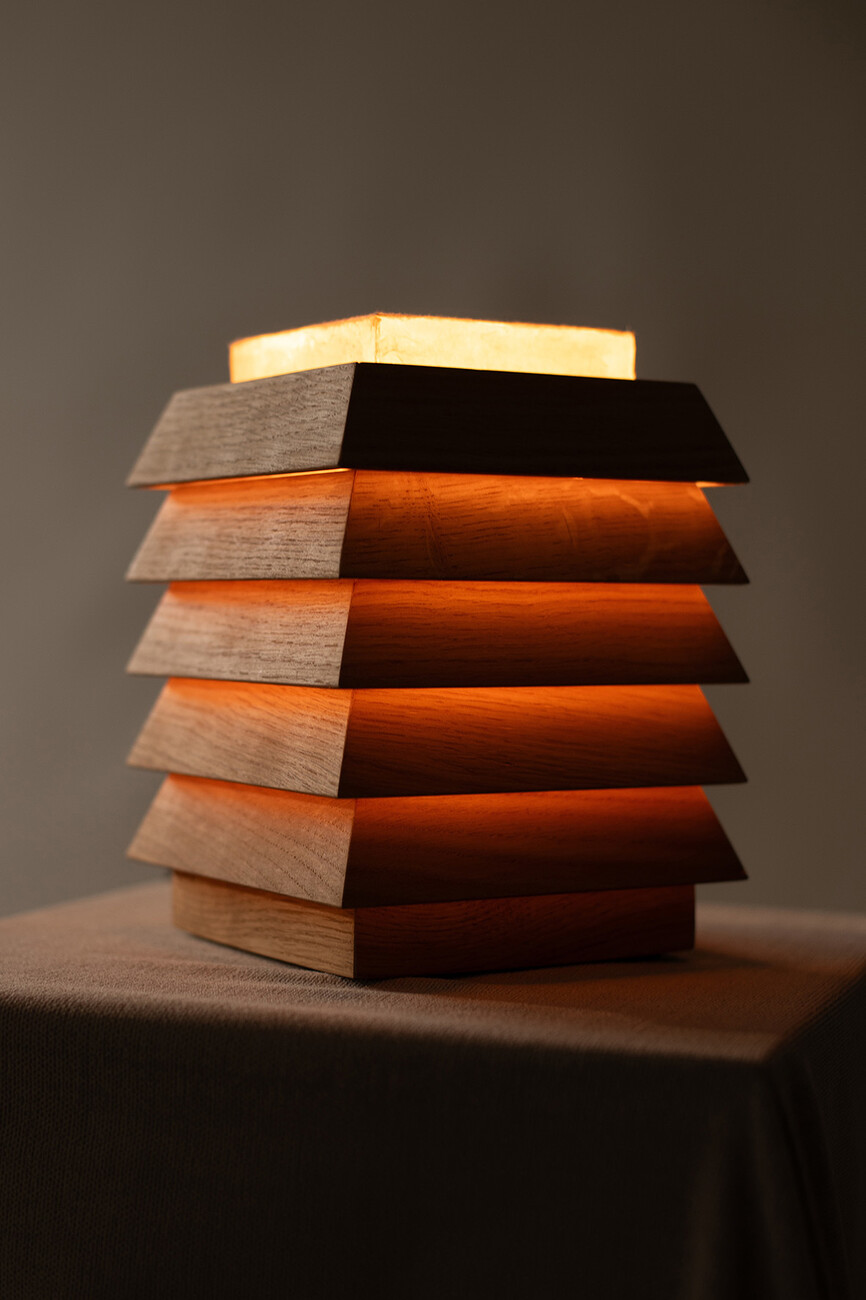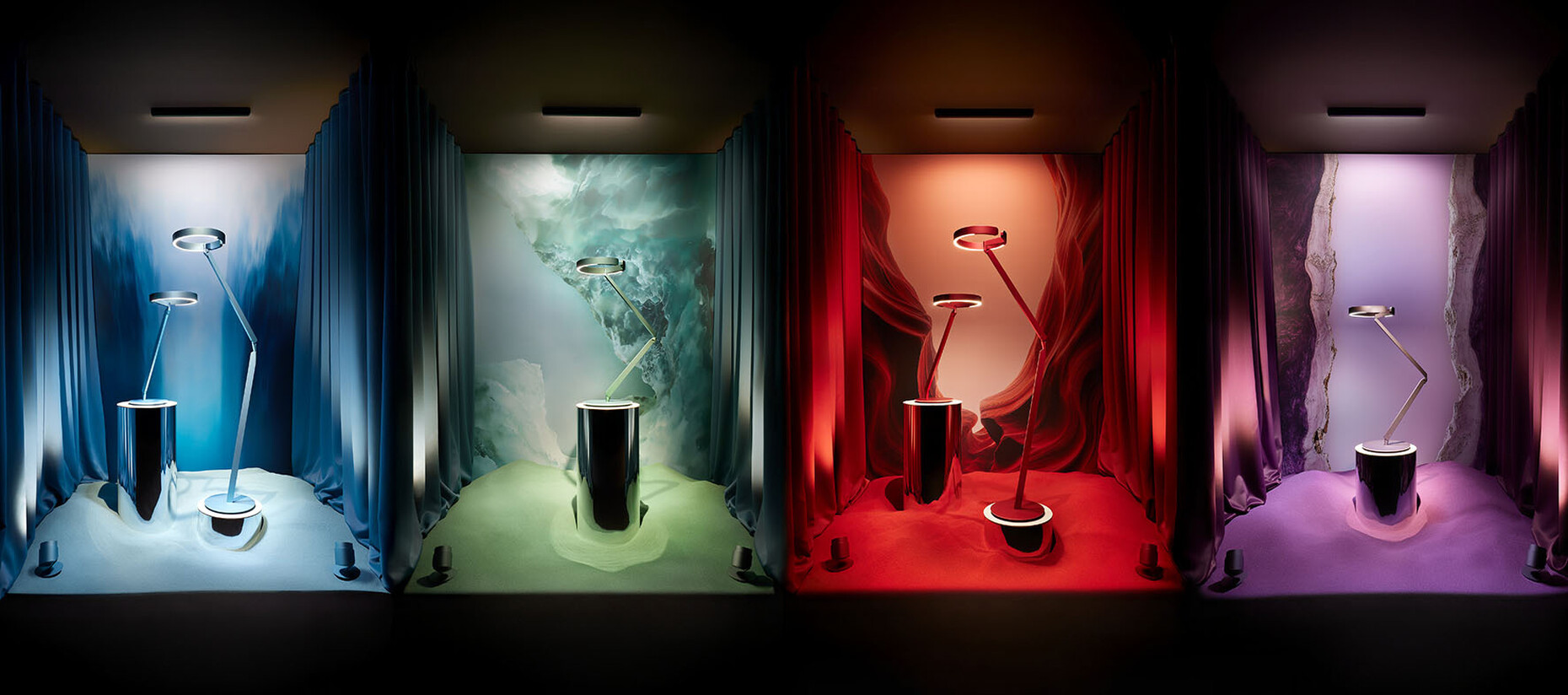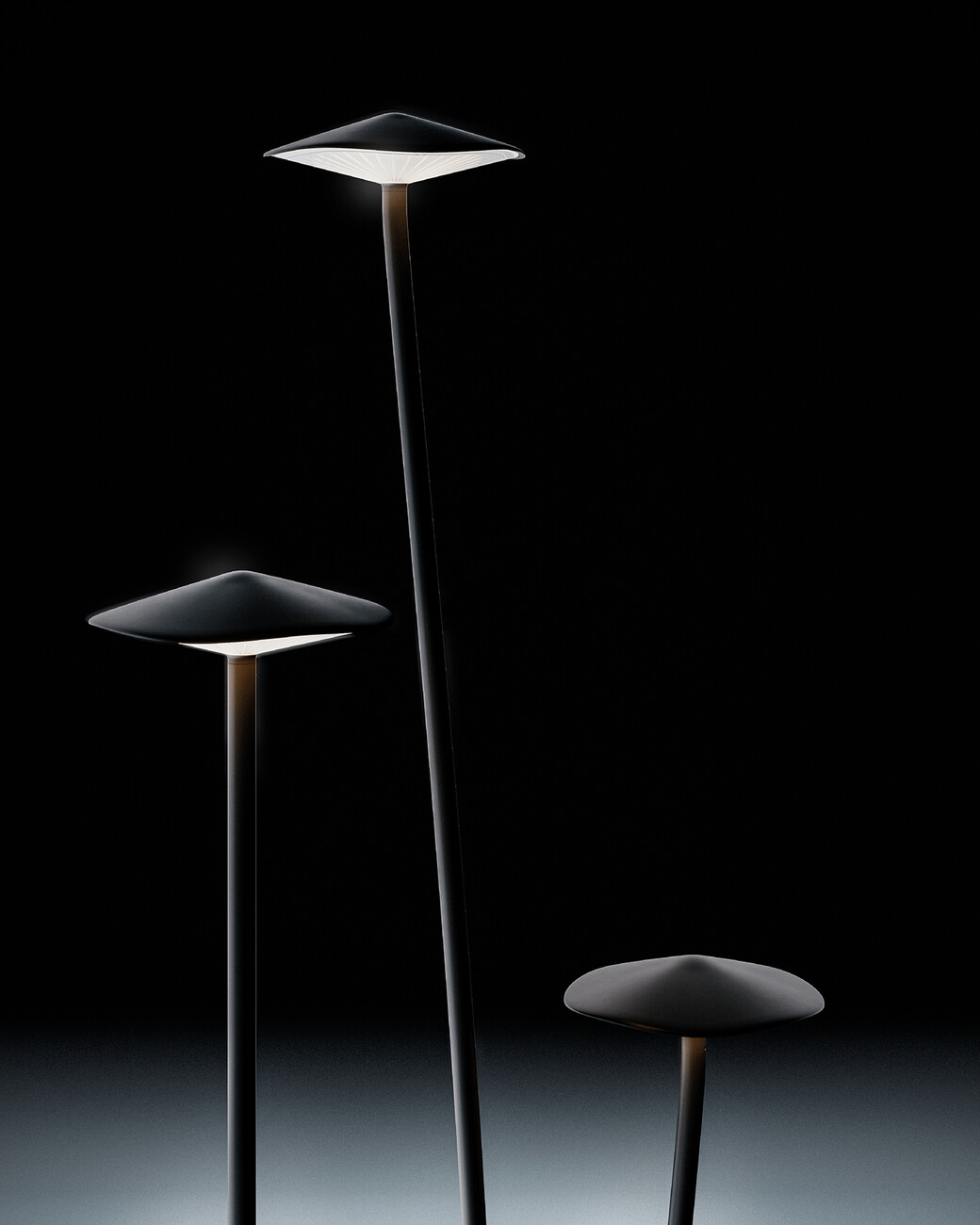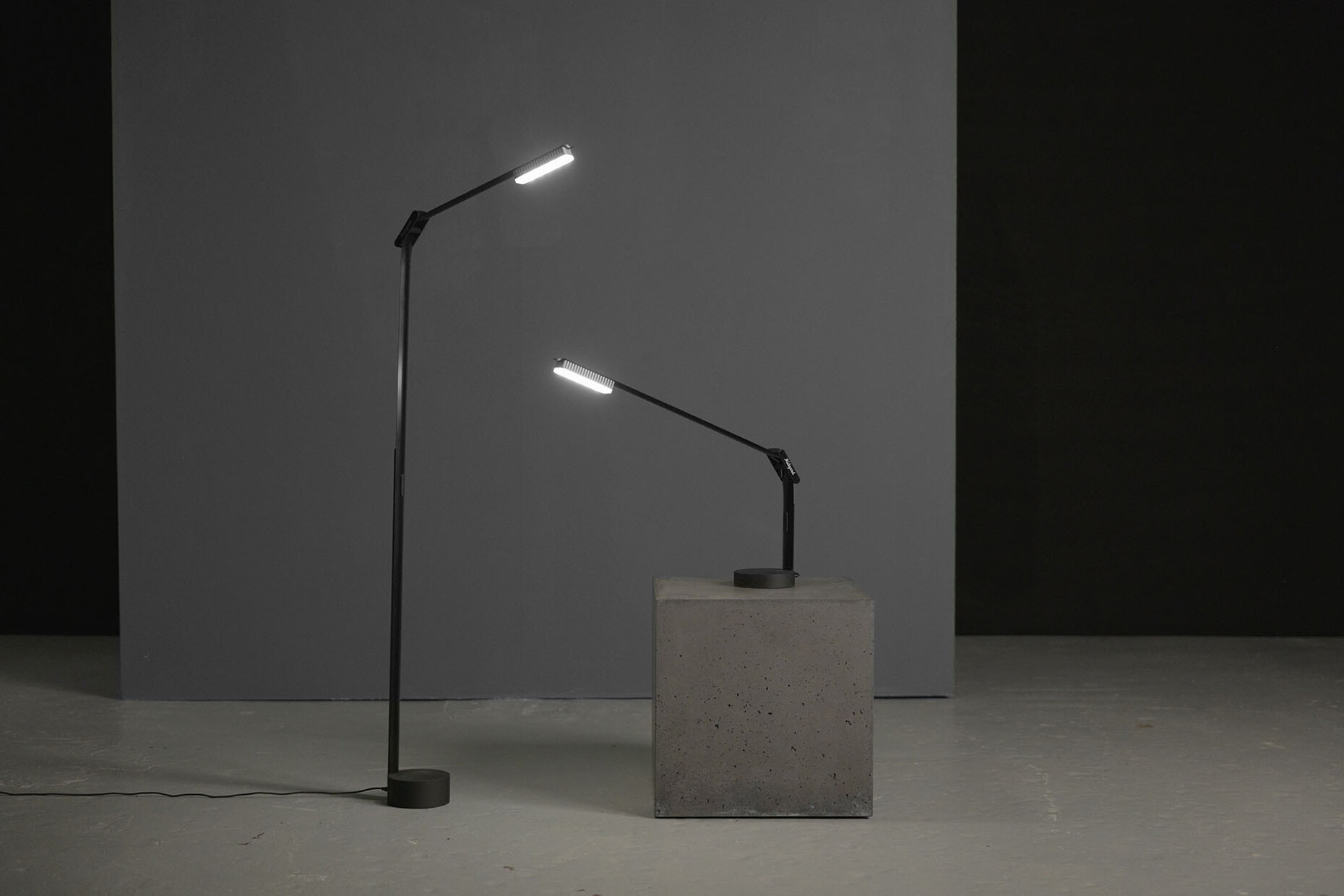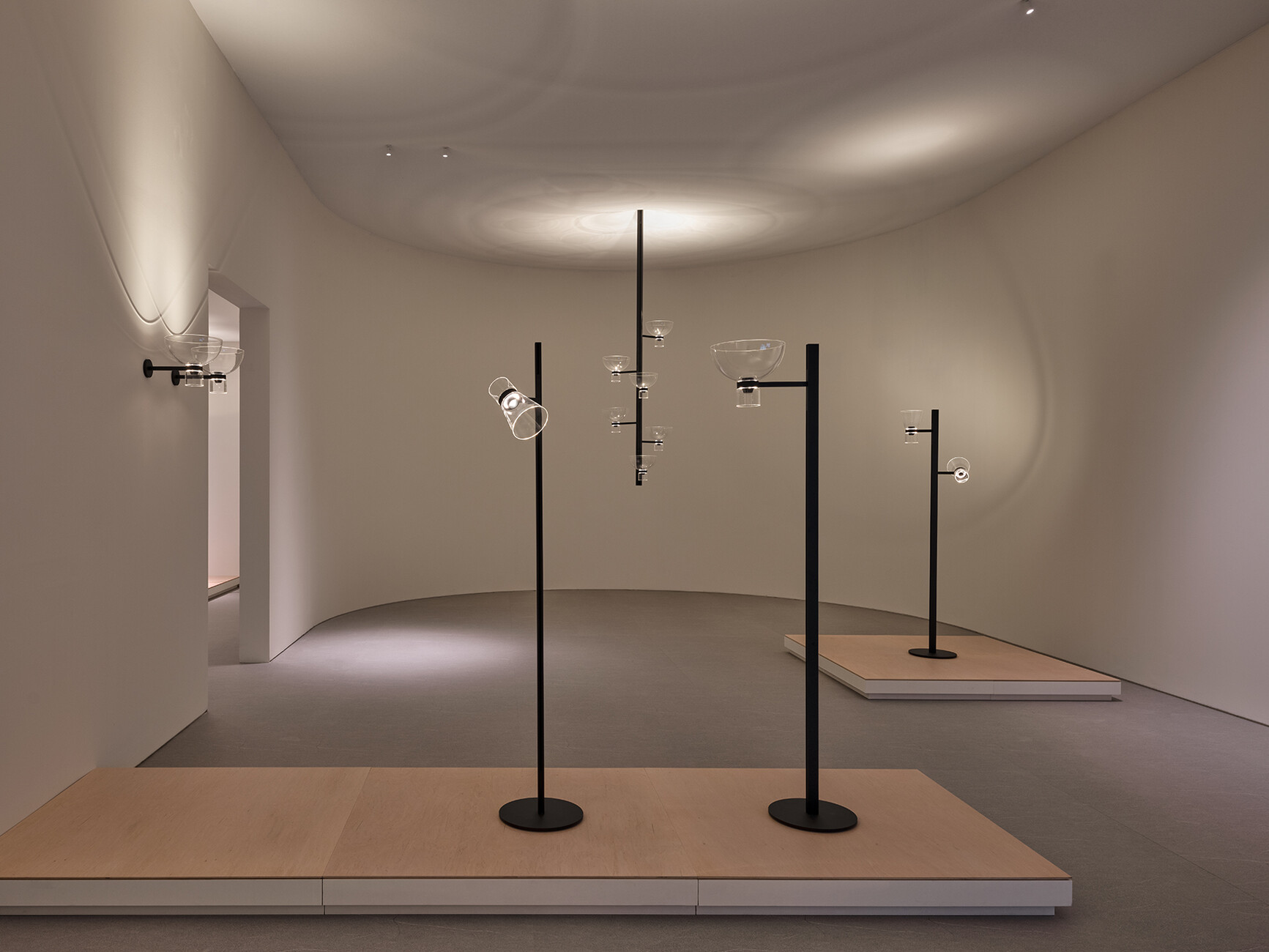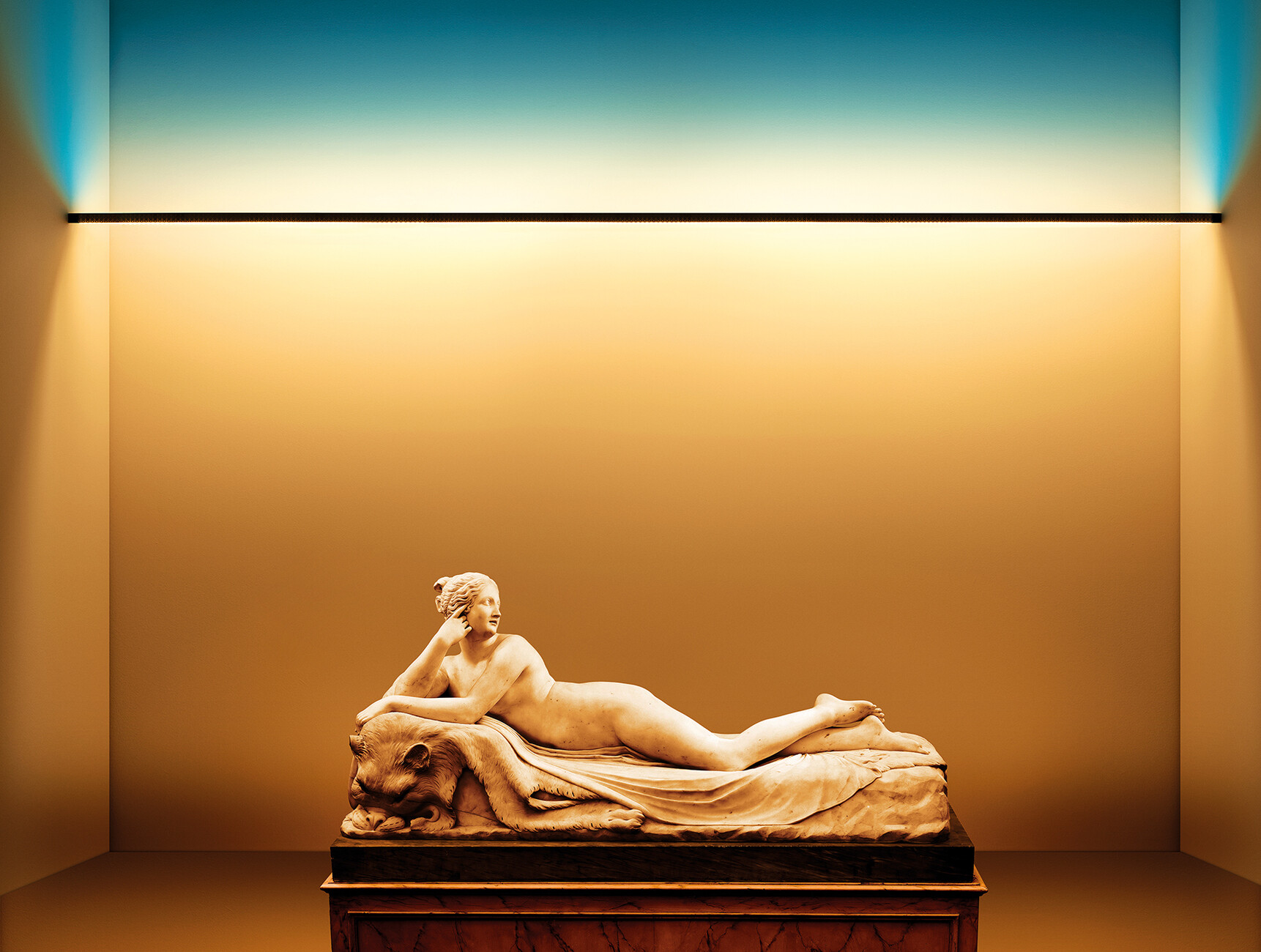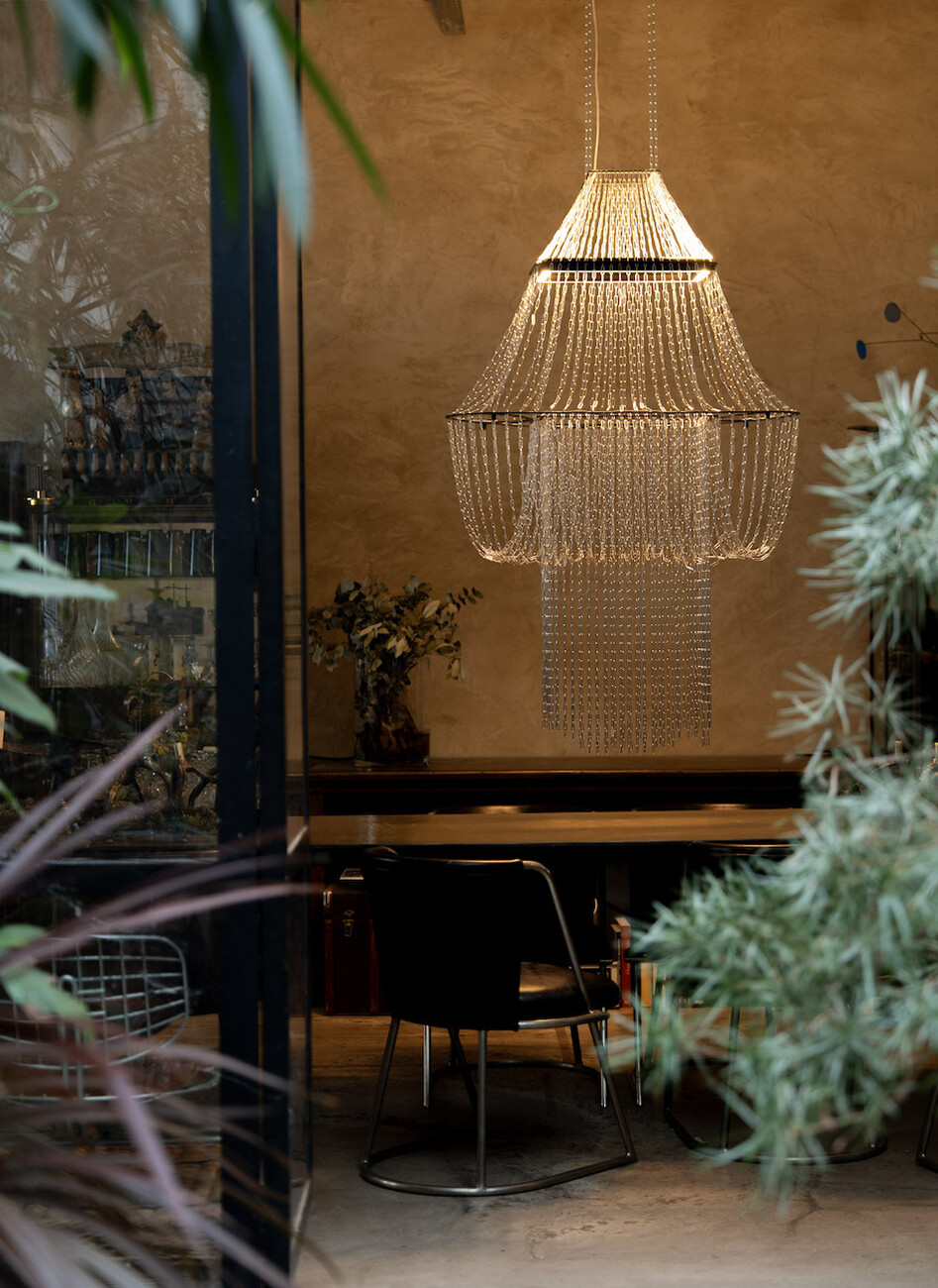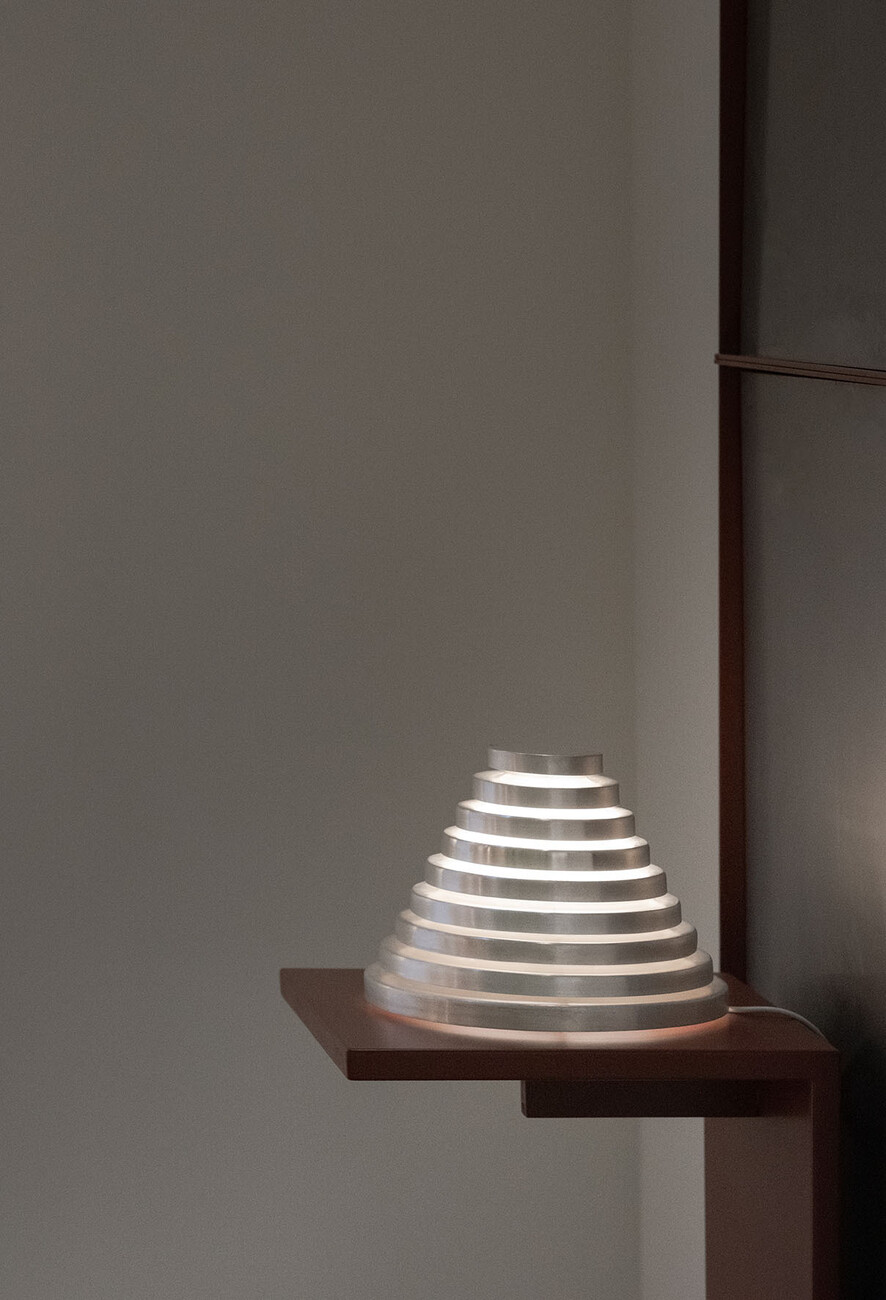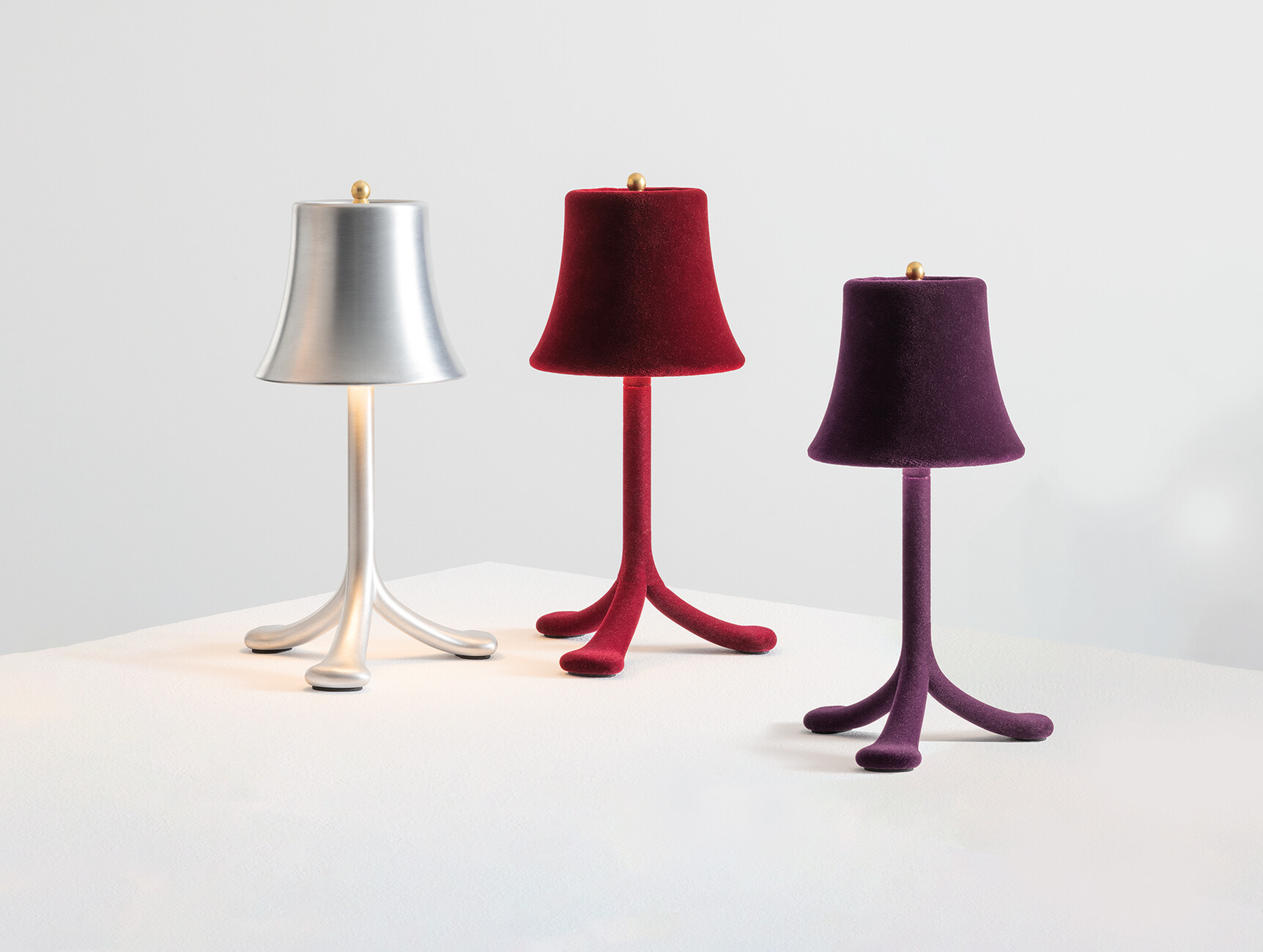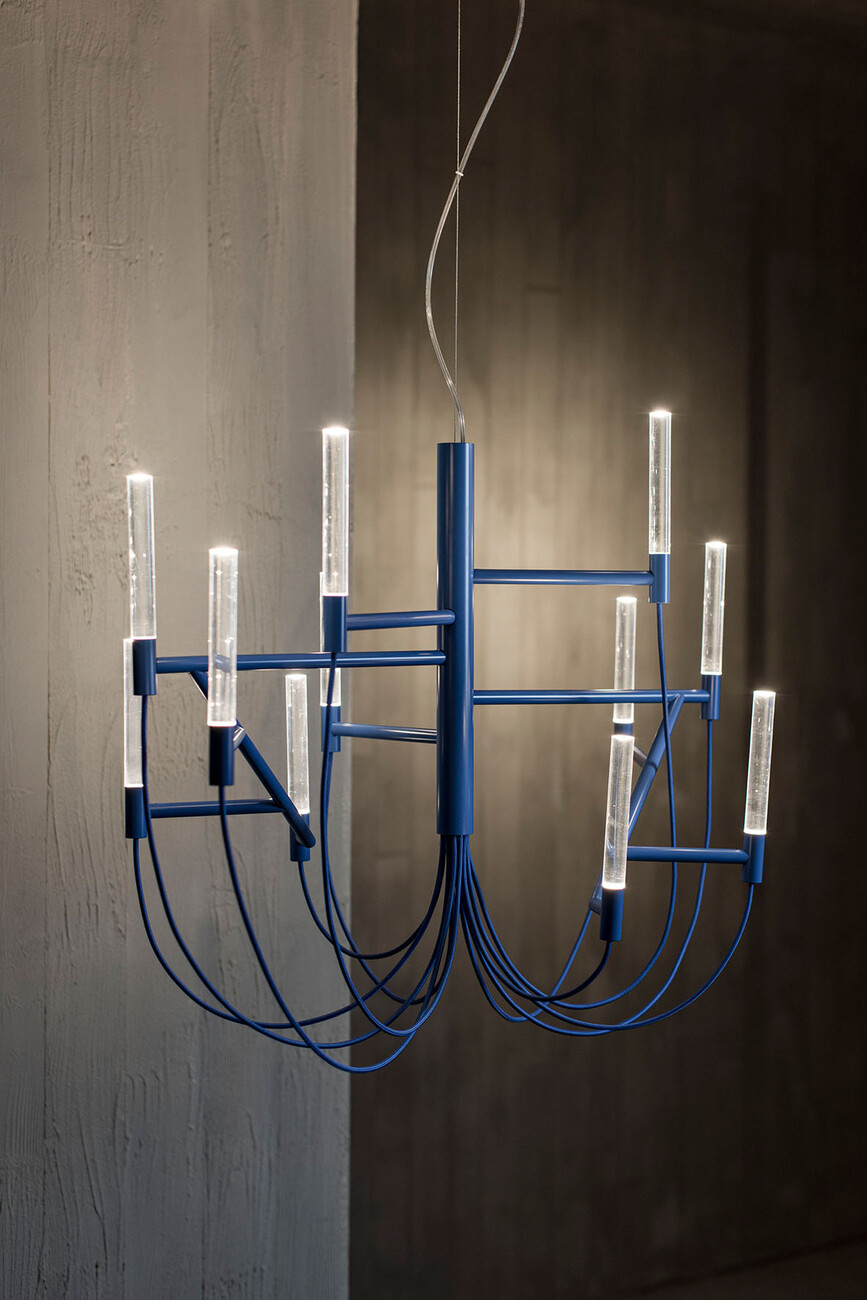REVIEW – EUROLUCE & MILAN DESIGN WEEK 2025
Tales of light from Milan
Euroluce, the lighting and luminaire show at the Salone del Mobile furniture fair, has maintained its position: compared to the previous edition in 2023, the number of exhibitors has fallen by single digits to 306. The organisers of Euroluce do not specifically report the number of visitors. The mix of manufacturers and brands was harmonious, with the big Italian names such as Flos, Artemide and Foscarini mingling with international manufacturers from all segments, from Rakumba from Australia to Brokis from the Czech Republic and Vibia from Spain to BTC Original from England. The German manufacturer Occhio presented itself in the city as usual, and was thus in good company, as there were also many new luminaires to discover in the palazzi and exhibitions. The advantage of Euroluce: nowhere else can the range be explored as compactly and concentrated as in the four exhibition halls in Rho. However, after the innovative, visitor-friendly floor plan in 2023, the trade fair organisers have returned to a more conventional layout and stand distribution – at the request of the exhibitors, according to reports. A best-of of the new products from the trade fair and from the city, sorted into four categories: System, Material, Classic and Personality.
System
Light often has a system: tracks and louvres, spots and strips bring light into our everyday lives over large areas or at specific points, but usually discreetly in the background. System solutions were also on show at many stands at Euroluce. In terms of design, "Map" at the stand of the Italian lighting manufacturer Lodes, created by the Berlin design duo Geckler Michels, stood out. "Map" consists of just two basic elements, an electrically conductive textile strip and a cylindrical lighting unit. Connected to the strip, the luminaires can be positioned anywhere on the wall or ceiling. As only one power source is required, the system is particularly suitable for older buildings. Konstantin Grcic has rethought the concept of track-based lighting for Flos: "Nocturne" is based on a track that is not attached to the wall or ceiling, but is used freely in the room as a pendant or floor lamp. Shades made of clear glass are attached to it, which are symbolically modelled on classic luminaire shapes. "Nocturne" thus combines technical and decorative light in a new way.
Material
Designers are divided on whether light is also a material and can be used accordingly in architecture and interior design. The materiality of luminaires, however, is undeniable and was staged many times this year in Milan. David Pompa, for example, half Austrian, half Mexican, has dedicated himself entirely to the typical materials and craft techniques of Mexico. Accordingly, his company's Euroluce stand was designed as a material atlas, with sections on blackened ceramics, recycled glass, palm fibres, lava stone and silver. The lights are produced locally and can be repaired. For Australian manufacturer Rakumba, on the other hand, a single luminaire took centre stage: "Big Glow" by Studio Truly Truly. The shade of the warm glowing pendant light is made from a mixture of wool and bioplastic fibres and is biodegradable. Despite its large size, the woollen lamp can be folded and sent flatpack.
Paper is a traditional material for luminaires in many cultures: Michael Anastassiades from London assembles his modular "Cygnet" luminaire from triangular pieces of paper, inspired by the structures of flying kites, which can be seen in Milan in the rooms of the Fondazione Danese. Erwan Bouroullec, on the other hand, uses paper-like Tyvek for his playful lighting object "Maap" (Flos). Printed with a striped pattern, decoratively crumpled and variably attached with magnets, it creates cloud-like shapes, more mood-setter than light source. Glass also never seems to dry up as a source of inspiration: Canadian manufacturer Bocci presented a new design by creative director Omer Arbel in its Milan showroom. The hand-blown "141" luminaire consists of two glass leaves that appear to hang randomly over a metal rod. The rod in turn is both light source and suspension. In Patrick Jouin's Vera pendant light for Lasvit, the reference to nature is very direct: the elongated glass elements are textured with imprints of tree bark.
Classics
LEDs have liberated light and opened up almost infinite design possibilities for designers. And yet classic luminaire shapes remain relevant because they look familiar and fulfil familiar roles in interiors. For example, a magnificent chandelier adorned the stand of the French brand DCW éditions. However, "lamp C" by Thierry Dreyfus is not made of sparkling crystal, but of metal chains, and the light source is concealed in a rectangular frame. Foscarini has also reinterpreted the chandelier: Francesca Lanzavecchia has given "Allumette" a cool, asymmetrical shape – and staged the necessary cabling for the many light sources as part of the design instead of hiding it. Incidentally, she is one of the few female designers with remarkable innovations in an industry that is still predominantly characterised by men. Another particularly prominent exception: Carlotta de Bevilacqua, President of Artemide and prolific designer. But back to the updated classics, with the type of simple, white glass cube that is somewhat familiar as house number lighting. But the Milanese design duo 6AM has given the modest form a grand entrance with the Quadrato collection: In their exhibition "Two-Fold Silence" at the 1930s swimming pool Piscina Cozzi, which was well worth seeing, there were cube lights everywhere, albeit mouth-blown in Veneto and arranged in clusters or interspersed with patterns. The red version with the white EXIT lettering became an Instagram star.
Personality
The task of luminaires is to provide brightness, depending on the shape and situation? Undoubtedly, but in addition to this obvious function, especially in the decorative segment, there are often others that a wardrobe or a dining table rarely fulfil: namely to entertain, to tell stories, to awaken associations, even to amuse. How else can you explain the extremely cute, almost Smurf-like shape of the portable Trois Rois lamp designed by architects Herzog & de Meuron for Artemide? Equally delightful: the mushroom-like "Kinno" outdoor light by Patrick Norguet for Lodes, which will blend in naturally in the garden. The "Gambosa" table lamp from Marset is also full of character with its wide, flat hat. Designer Mathias Hahn has given it a somewhat capricious but likeable personality.
In contrast, the austere "Pagoda", a table lamp from Daniel Heilig by Heilig Objects in Griesheim, Hesse, is reminiscent of Far Eastern architecture. "Campfire" from the Hamburg label Grau also has its role model in its name. Reminiscent of a bundle of oversized matches, the large light object is intended to be the softly glowing centre of attraction around which everyone likes to gather. Quite different and just as unique are two lights that are emphatically technical: The "Ray" table and floor lamp, designed by Christian Loddo, Hugo Berger and David Einsiedler, caught the eye at the Midgard stand in Hamburg. The luminaire arm consists solely of a self-supporting steel band that can be adjusted using a movable slider. The lamp head sits at the end of the band, formally reduced to the necessary minimum. A great deal of development work has gone into this unusual, completely dismountable design – while the "Strange Little Thing" luminaire by Axel Schmid for Ingo Maurer, which is also reduced to the bare minimum, looks as if it has just been improvised. A circuit board with LED, switch and USB-C connection, attached to the supply cable with a wire clamp – and that's it. Light can be that simple.
